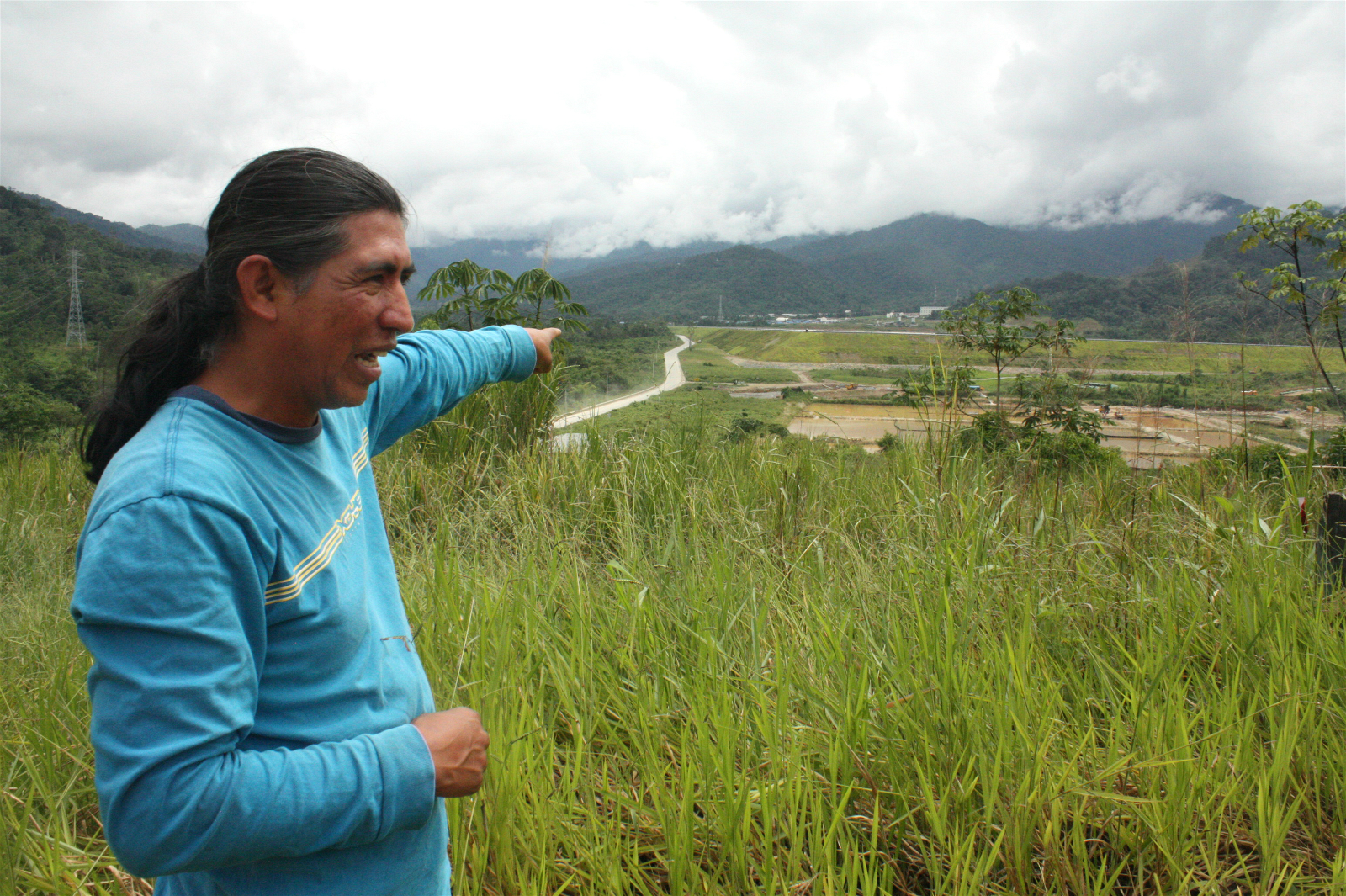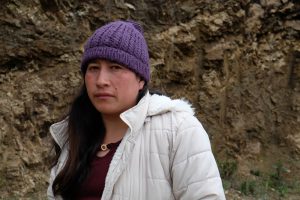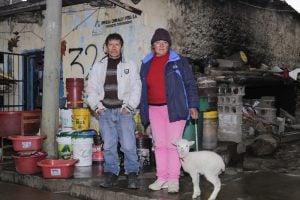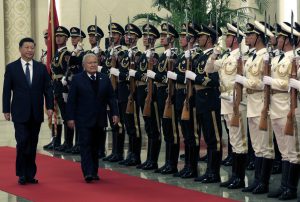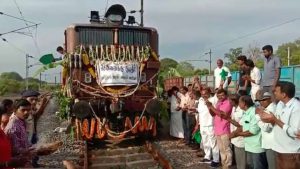This article, and the first part, was written by Ning Hui, an Initium Media journalist, with support from the Pulitzer Center’s Rainforest Journalism Fund and Andrés Bermúdez Liévano of Diálogo Chino.
In his WhatsApp profile photo Zhu Jun poses with a local Ecuadorian man. Zhu is square of face, young and wearing glasses; the local is strong, naked to the waist, with traditional necklaces and feathered headdresses.
Zhu has been a community relations manager since 2013 for Chinese company CRCC-Tongguan (hereafter Tongguan). He works in Tundayme, a small town in south-east Ecuador close to the Mirador copper mine. This large mine has ore reserves of 660 million tonnes and has been operated by Tongguan since 2010.
Zhu sounded worried when I spoke to him on the phone: “You’ve already been in touch with CASCOMI. Maybe you’re already on their side?”
He was referring to the Amazonian Community of the Cóndor Mirador Mountain Range, an organisation of about 100 local tribal households, founded in 2014 and chaired by Luis Sanchez Shiminaycela. It’s been causing the company problems.
Zhu sighs: “I hope in the end we’ll be able to reconcile with CASCOMI and Luis.”
Luis is swarthy, with long greying hair tucked behind his ears. He takes his Kichwa identity seriously but when I talk to him he isn’t wearing traditional dress. “These mountains are called the Condor Range,” he says. “The first finger of the Andes to reach into the Amazon rainforest.”

The Mirador mine in front of the Condor mountain range (Image: Andrés Bermúdez Liévano)
It’s March and we have come to a viewpoint high above the Mirador mine. He points to a cloudy mountain top and asks: “Do you think the ridge looks like the face of one of us locals? We all think it does.”
Ten years ago, when all you could see from here was verdant green rainforest, that might have seemed an interesting question. But between our viewpoint and that mountaintop, more than 1,300 hectares of rainforest have been turned into an open-pit mine. Expanses of yellow earth are exposed on the mountainsides, small clusters of buildings are scattered here and there, and huge machines are present. From here we can see only one-seventh of the mine.
Luis suggests the biggest difference between himself and the Chinese is that “maybe Chinese people keep thinking about the money buried under the ground. Here we don’t want that money. We used to have a kind of wealth that the mining industry can’t make up for.”
1.
Willem Uyaguari lives in Gualaquize, a small town about 40 kilometres away from Mirador. He gets occasional work at a chicken farm. He tells his story of eviction almost in a single breath, eyes reddening as he speaks.
Part of the mine complex is a 9.6 million cubic metre tailings pond for ore residue. It was completed in September 2018, and according to Willem, “our house” and “our whole life” is in there.
Willem is also Kichwa. His parents moved here from the Andes in the 1980s, settling in nearby San Marcos. At the time the government was encouraging Kichwa to move there as the Condor Range was caught up in a territorial dispute between Ecuador and Peru. The Kichwa bolstered land claims and helped the armed forces.
A Canadian mining company arrived soon after the dispute ended in 1998. At that point four of Willem’s seven brothers were still living at home. “The Canadians talked with my parents about buying their land. They thought it over very carefully but decided not to sell. They wanted to leave the house and the land to their children.”
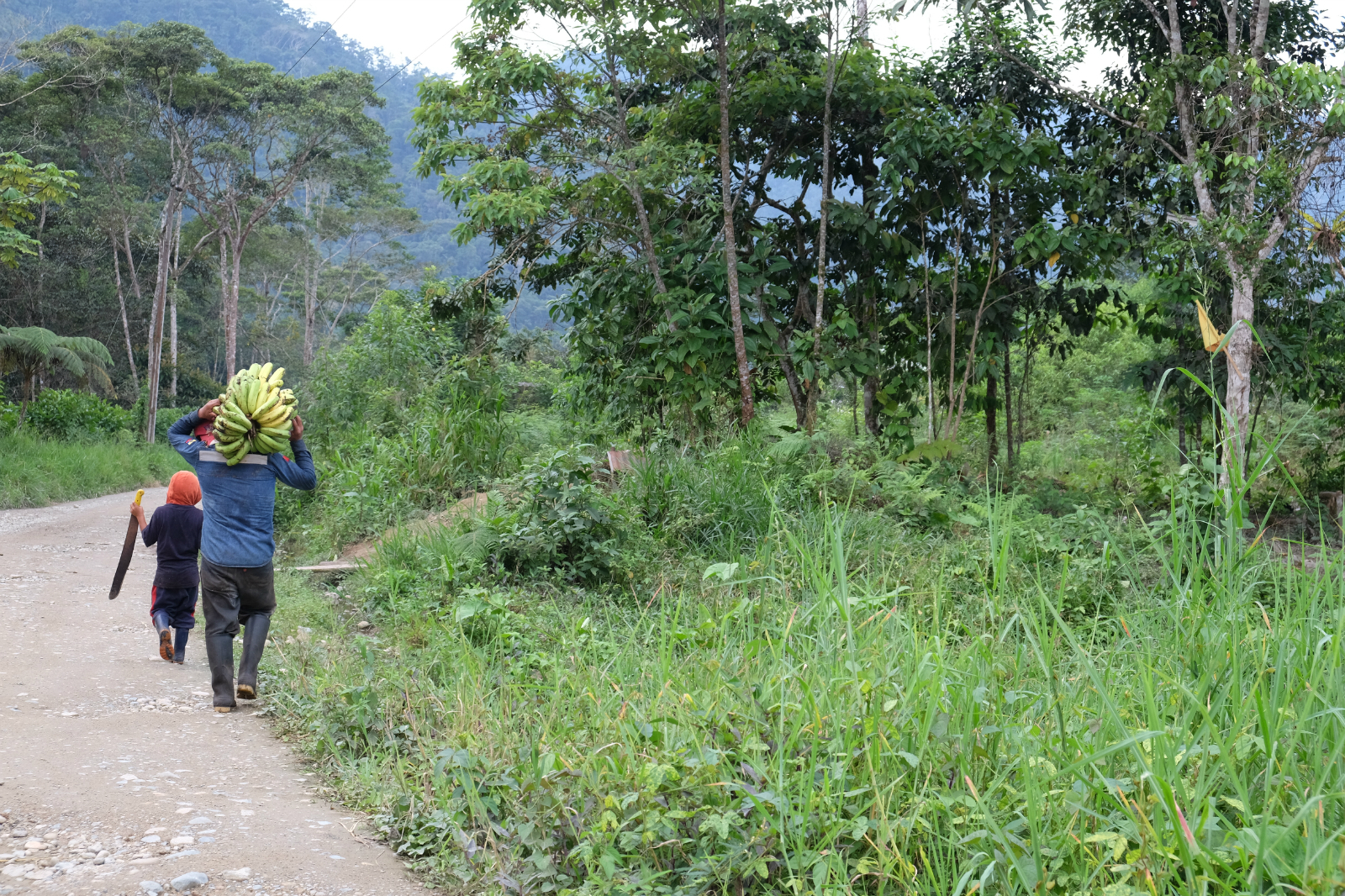
(Image: Ning Hui)
Tragically, his parents were killed shortly afterwards while crossing a river in flood season. When they lost their home, they were still in mourning, as that wooden house was “all my parents left us.”
“On September 30, 2015, when we least expected it – 4am – police and private security guards turned up at our house, saying we had five minutes to get out. What, were we criminals? They took everything we had and threw it into the back of a truck: clothes, my nephew’s paper and pens, everything. My sister-in-law had only left hospital the week before after suffering a miscarriage and having a hysterectomy. They even took her medicine. They had a digger, they dug a hole, demolished the house and put the debris in the hole.”
“Mementos of my parents, a scarf my mother liked, all lost.”
He was particularly shocked as he thought there had been scope to talk with the mining company. When the relocations started, he’d been working for Tongguan for seven years: hauling machinery at first, then grass-planting after he injured his back. His sister received a notice a week beforehand saying the government was exercising its “right of way” – a measure allowing the state to use private land. Willem visited the company to ask if they could negotiate. Perhaps the company could provide them with a similar house? “But they refused.”
The day they were evicted, an official offered them a cheque to shut them up. “I didn’t even look to see how much it was,” he says. “It isn’t a matter of money.”
Willem lost his job at the mine less than two years later. “Their policy is that if you work for them, you’re not allowed to complain about them.”
After three rounds of evictions, 136 people from 32 households in San Marcos were forced to leave. Almost half were children, and more than ten were over 65.
The Kichwa who were moved here to protect the borders found that once the territorial dispute with Peru was over, the homes they had struggled to make for themselves fell into the hands of the mining company. Luis says that many locals fed and guided soldiers in the rainforests, but now received no protection from the government, leading to bad feeling.
2.
Tongguan is a joint venture between the Tongling Nonferrous Metals Group and the China Railway Construction Corporation, trading as EcuaCorriente S.A. (ECSA) in Ecuador. In 2010, Tongguan bought out ECSA’s parent company, Canadian firm Corriente Resources, for 679 million Canadian dollars (about 3.4 trillion yuan).
Tongguan did not only buy Corriente Resources for the Mirador mine, which the Canadian company had started working in 2000. Corriente Resources had been developing copper and gold mines across South America since 1992. It had acquired copper mining sites across 1,600 square kilometres, including four known deposits (one of which was Mirador) and six potential ones.
Luis describes how in 2001 Corriente Resources promised better lives and jobs to persuade the locals to sell their land. By the time Tongguan took over in 2010, such promises had not been fulfilled so opposition to the mine was on the rise. It peaked when the government and the Chinese firm started evicting people. “First we fell in love, then we fell out of love, and now we’re resisting,” says Luis.
In Ecuador’s capital, Quito, lawyer Mario Melo Cevallos has been following the Mirador mine and representing the Kichwa in their human rights lawsuits. He complains that “the government approved the Mirador project without ever listening to social or environmental concerns”.
If the government and investors had listened to those other voices, they would have seen how many challenges the project would face. The mine’s environmental impact has seen the greatest criticism. The Condor Range isn’t just a huge store of copper, it’s also incredibly rich in biodiversity.
In 2016 and 2017, Santiago Ron, an evolutionary biologist with the Catholic University of Ecuador, led a survey of a site about 10 kilometres from the mine. They found eight new species: six frogs, a lizard and a mammal. The soil in the Condor Range is unique too, and gives the local water a wide range of minerals. Locals say streams are the colour of Coca-Cola.
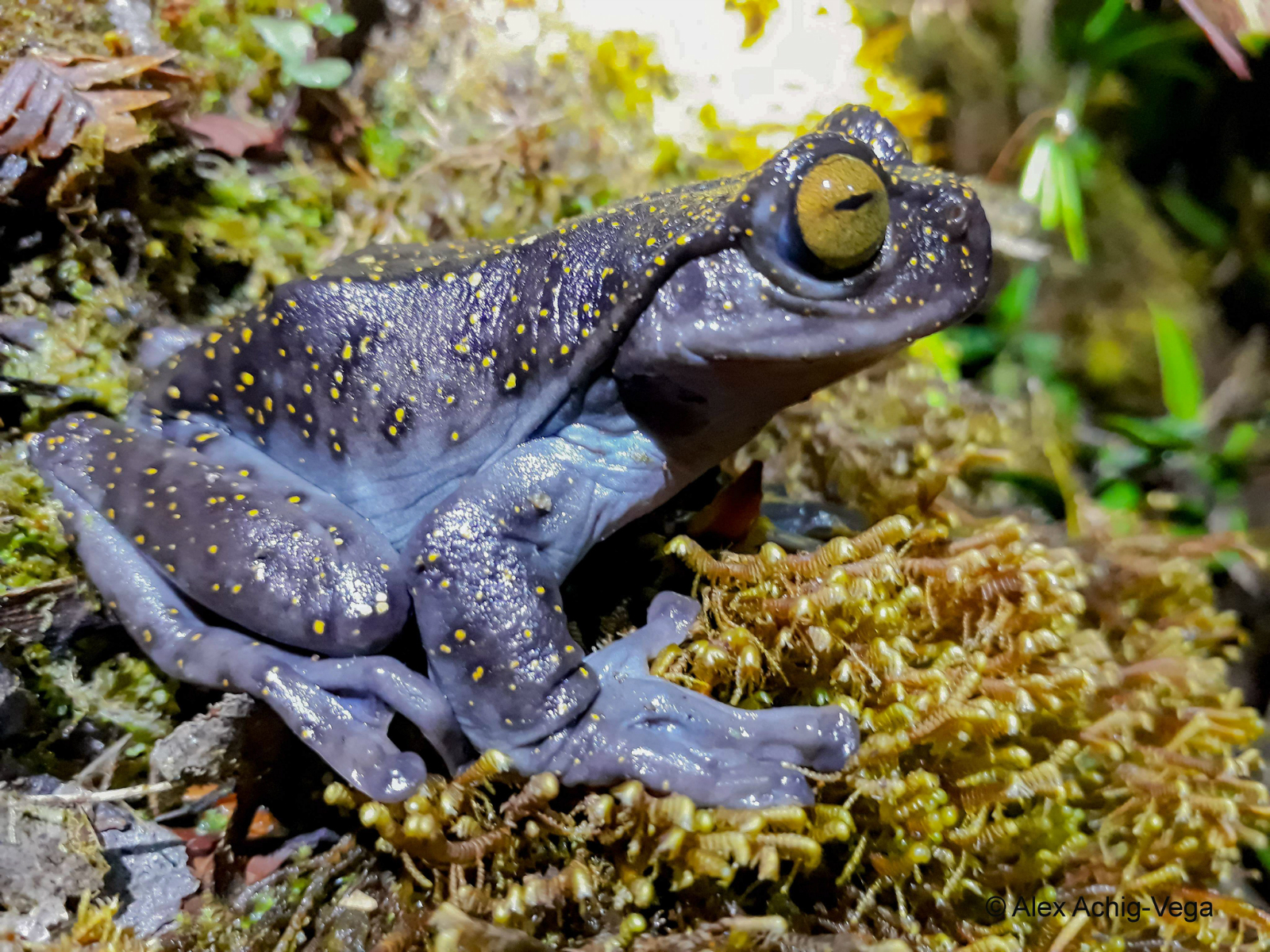
The new species of tree frog discovered in the Condor Range this year (Image: Alex Achig)
The mention of Mirador saddens Santiago Ron. “There’s so much still unknown in the Condor Range, but it doesn’t get government protection. Large open-cast mines like Mirador do huge damage when compared with small-scale traditional mining methods. Mountains rich in biodiversity just get destroyed.”
Back in 2012 Tongguan signed a contract with the Ecuadorian government that sparked large-scale protests, with mine opponents marching the 380 kilometres from the mine to Quito. Similar protests have occurred every few years. Protestors have also used the legal system. Lawyer Mario Melo Cevallos knows these cases well. “Since 2013 those opposing the mine for various reasons have brought at least six lawsuits.”
Those lawsuits have complained of infringements of the rights of nature, of the murder of indigenous leaders, of infringement of community housing rights, and of the failure to allow indigenous people their right to free and prior consent. Subsequent lawsuits have attempted to address environmental destruction, to use constitutional protections against the tailings pond, and to use administrative processes to void existing environmental permits.
But so far, the cases against the mines – brought variously by local officials, indigenous community groups, individuals, environmental groups and scientists – have all been lost.
Free, Prior and Informed Consent
The idea of Free, Prior and Informed Consent (FPIC) was put forward in the United Nations 2006 Declaration on the Rights of Indigenous Peoples, as a prerequisite for any activity that affects their ancestral lands, territories and natural resources. In 2008, FPIC was written into Ecuador’s constitution.
3.
The most recent lawsuit was in February 2018, when CASCOMI brought a case against the Ministry of Energy and Mines, the Ministry of the Interior, the mining regulatory bureau and Tongguan in the Pichincha provincial court, complaining of a failure to carry out the prior discussions required in the constitution, and human rights infringement during the compulsory relocations. On January 15, the court ruled that the open-cast mine did not impact on the ancestral territory of indigenous communities so there was no need for prior consultation.
Ancestral territory is a fuzzy concept. Ideas of territory amongst indigenous people usually go beyond the definitions found in modern law and politics, and administrative maps struggle to accurately reflect its borders.
And so indigenous communities need to repeatedly prove their links with the land, while other parties who want to use the land (usually governments and companies) deny those links exist.
CASCOMI was founded in 2014 and later became a member of CONFENIAE, the Confederation of Indigenous Nationalities of the Ecuadorian Amazon. According to Luis, 60% of CASCOMI members are Kichwa, with the remainder Shuar or local farmers. There are about 40,000 Shuar people in Ecuador. They are known for never having been conquered by the Spanish.
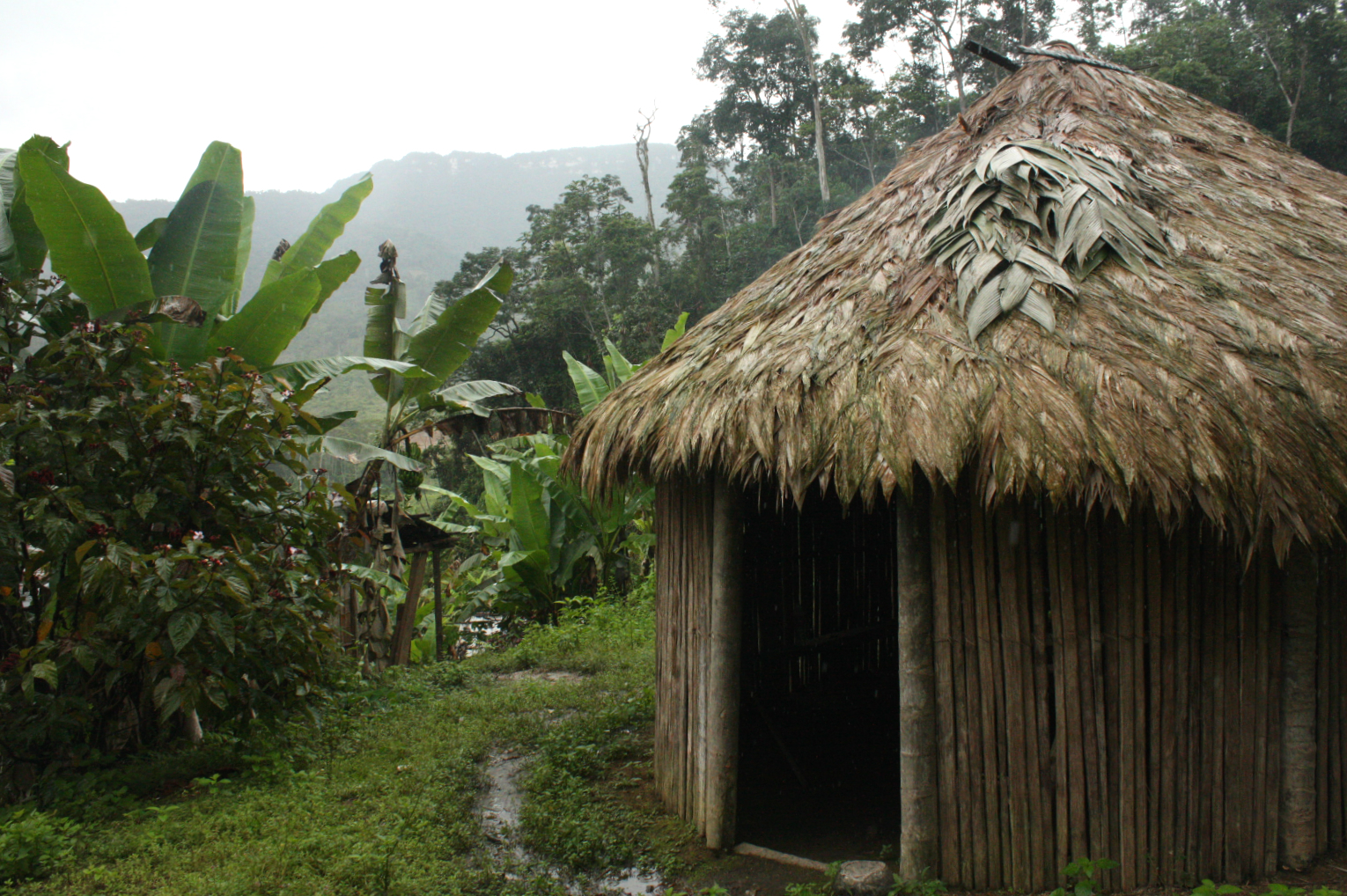
The area where the mine will be developed is populated by indigenous Shuar peoples – who live in huts like this one – and Cañari Kichwa (Image: Andrés Bermúdez Liévano)
The foundation of CASCOMI prompted many locals around the Mirador mine to formally claim their indigenous status. Luis’s grandfather could speak fluent Kichwa, but his generation would never have officially identified themselves as Kichwa were it not for the conflict over the mine. The struggle started to pit indigenous communities against outsiders. But others have asked whether CASCOMI was representing “real” indigenous people.
Zhu Jun is clear: “CASCOMI is not an indigenous organisation.” And this view is not without evidence.
In 2018 a court dispatched an anthropologist to survey the indigenous communities of Tundayme. The study concluded that “CASCOMI is not an indigenous organisation” but did find that Tundayme is Shuar territory. Francis Andrade, a lawyer with REPAM, a Catholic organisation following that lawsuit, said the survey was thorough but that “this also proves that distribution of indigenous territory and populations is complex and needs to be approached cautiously.” And even if CASCOMI is not an indigenous organisation, that is no reason to ignore the rights of indigenous people and farmers living locally.
Ecuador has seen several cases of successful indigenous opposition to resource projects. In October 2018 a Cofan community brought a lawsuit against several nearby mines and won on appeal when the court determined the government had not obtained free and prior consent. In May 2019 the Waorani won their case against oil drilling due to lack of prior consultation. Similar lawsuits have affected Chinese-funded mines, such as the Rio Blanco gold mine, a joint venture between Hong Kong’s Junefield Mineral Resources and the Hunan Gold Corporation, where the local indigenous community won its case.
The investment in and scale of the Mirador mine is much larger than the Rio Blanco project so it’s more important for the China market. Lawyer Francis Andrade says that means the precedent set by the locals’ victory at Rio Blanco will be less significant for Mirador as the opposition will face more obstacles. Mario Melo Cevallos still hopes to see a legal resolution, and worries that “when those approaches have been exhausted [but conflict not resolved], more intense confrontation and protests often follow.”
Zhu Jun says the company has a legal department to look into the issues, adding, “We’re not worried.”
Tongguan maintains it did nothing wrong in the San Marcos evictions. “They’re always complaining about San Marcos, saying it was forced eviction and using it as a weapon against us,” says Zhu. He adds that there is a lot CASCOMI hasn’t told me.
“Land needs to be bought for the mine. The guide price for land at the time was US$500 a hectare. When the company was buying land it was agreeing on prices between US$2,000 and US$8,000, much higher than market prices. But some locals refused to sell as they were opposed to the mine. If they were asked to suggest a price they’d ask for US$150,000. There was nothing we could do and our work was stalled.”

Scientists like Santiago Ron consider the Condor area as one of the most biologically rich and least explored in Ecuador. (Image: Diego Paucar)
An open letter to the Chinese authorities provided by Francis Andrade quotes different figures entirely: “In March 2014 the Ministry of Energy and Mines asked the Ministry of Housing and Urban Development to assess the price of land around Mirador, to determine a market price for property affected by the Mirador mine. That assessment determined a cost of US$2,013.60 to US$3,443.26 [per hectare], much higher than the prices the company was offering, of US$400 to US$700.”
In Zhu Jun’s telling, the government intervened at the appropriate point to resolve the conflict. “The mine is a national strategic project. If agreement can’t be reached with the locals, the government can assert its rights out of strategic need. It wasn’t our company that asserted those rights. It was the government’s solution, implemented entirely by the government.”
According to Zhu, Tongguan paid at least US$3,000 a hectare in compensation, which was handed to the mining regulators for distribution to residents. The company also bought land in Tundayme for the relocated households.
But Luis Sanchez Shiminaycela says there are various problems with that land. There is no water or power, and the company wants the city government to install those services. The local government argues this is Tongguan’s responsibility because the company wanted the relocations. Some families did accept land there from the company, but many now regret it. Only two or three families live there now.
“How can they force people to leave good homes and in exchange give them a piece of wasteland?” Luis asks.
Luis and Zhu Jun have completely opposite stances, and it is hard to see how their disagreement can be resolved. When Luis was asked if he had accepted Zhu’s offers of negotiations and reconciliation, he said: “Negotiate about what? We won’t negotiate any deal. I can’t negotiate over people’s lives and water.”
It is not rare for Chinese mining firms to encounter sustained opposition from indigenous communities. Li Ai, a policy specialist with Greenpeace, follows China’s overseas mining investments. She says: “Chinese firms often become the front line of interactions between local communities and various interest groups in the host nation.”
Mining and fossil fuels are key to Chinese investment in Latin America. But are these Chinese companies prepared to dedicate adequate resources over the long term to handle environmental, land, labour and health issues arising with local communities? In 2009 Zijin Mining’s Rio Blanco copper mine in Peru, which had already been fined repeatedly for breaches of local environmental laws, stopped operations after protests over the dumping of waste in the sea. Environmental issues have caused repeated demonstrations at China Minmetals’ Las Bambas copper mine, also in Peru.
According to Li Ai: “The direct economic benefits to local communities from oil and mining investments are tiny, but indigenous communities bear the brunt of environmental and other consequences. Wastewater flows into rivers, rainforests are destroyed, biodiversity is damaged, land is appropriated, and locals relocated. For the indigenous people, someone is walking into their home and destroying things they treasure.”
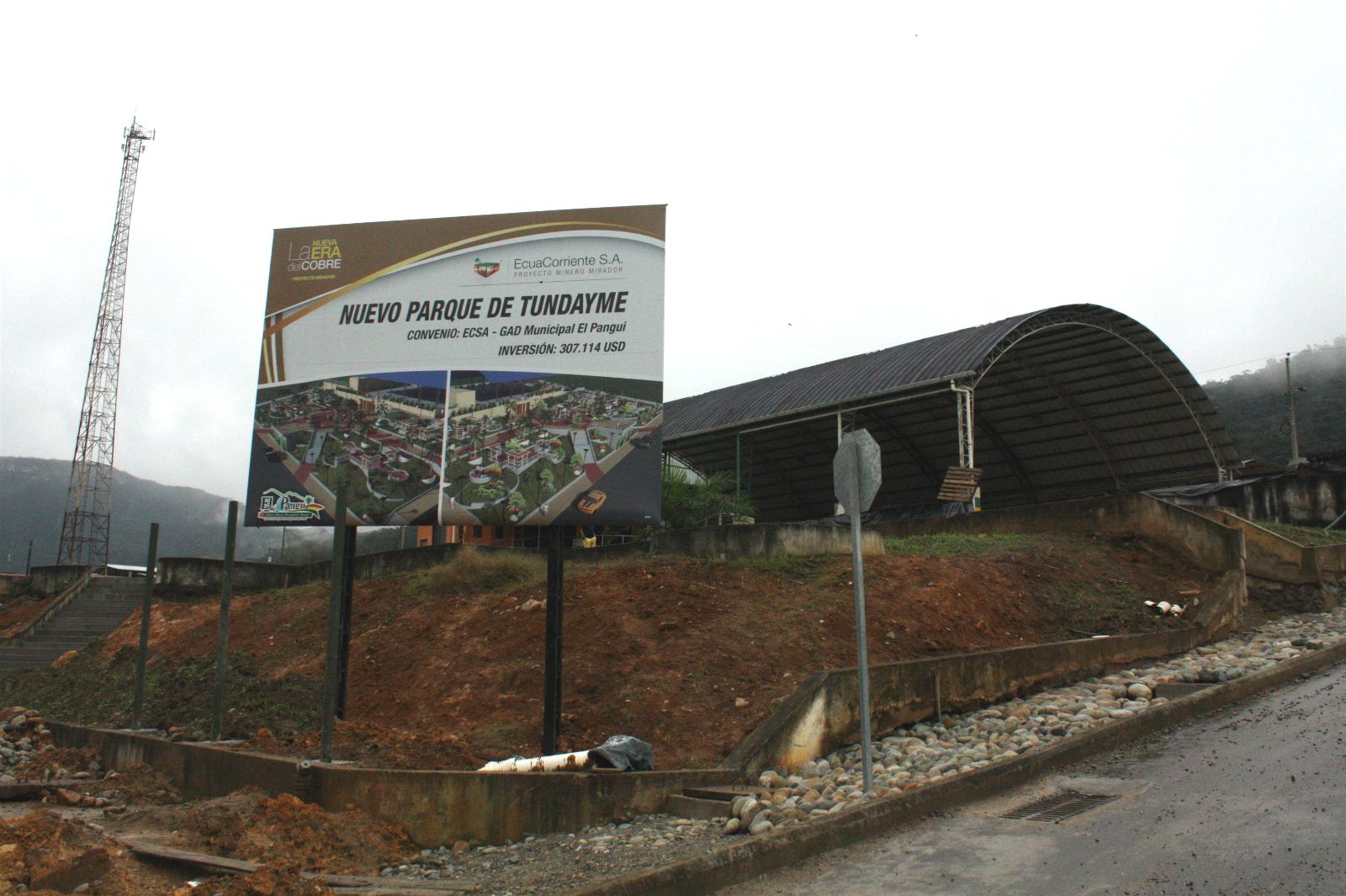
The Ecuadorian government insists that the mine will encourage development and resources that this forgotten jungle region has not yet seen (Image: Andrés Bermúdez Liévano)
And there are no quick solutions. In 2012 the China Aluminium Corporation noted the lessons learned by other Chinese firms working in Latin America when investing in a copper mine in Toromocho, Peru. It spent US$50 million building a new town for 5,000 locals, a move seen at the time as a successful example of company–community relationship management. But six years later the results of a failure to carry out feasibility studies and inadequate planning can be seen: the new town’s economy is moribund, with half the population out of work. The new town is at risk of becoming a ghost town.
4.
In November 2018, Luis travelled to Geneva to describe the Mirador case at a review of China’s human rights record at the UN Human Rights Council. The UN report on that review, published in February this year, contains China’s response. China undertook to: “Promote measures that ensure that development and infrastructure projects inside and outside its territory are fully consistent with human rights and respect the environment and the sustainability of natural resources, in line with applicable national and international law and the commitments of the 2030 Agenda for Sustainable Development.”
As we walked by a river near the Mirador mine, Luis hesitated before asking me: What did China’s reply actually mean?
On June 7, 2019, the Pichincha provincial court rejected CASCOMI’s appeal and upheld the original decision: the Mirador mine site was not indigenous ancestral territory, and the relocations were legal. A disappointed Luis is discussing next steps with fellow lawyer Francis Andrade, but there are few legal options left. They could bring a case at Ecuador’s Supreme Court, or to the Inter-American Court of Human Rights. If that doesn’t work, he says, a submission to the Office of the United Nations High Commissioner for Human Rights may be possible.
Zhu Jun is confident about his work. He admits that when he took over the community relations job in 2013 “local communities were resistant to the company’s presence and they had a bad impression of outsiders”. When visiting nearby indigenous communities soon after starting the job, he accidentally ran into staff of an NGO: “They were Europeans or Americans, having a meeting with the villagers about how to oppose us. As soon as I arrived they started criticising me and things got a bit rude: ‘Chinese out’, that kind of thing.”
But he is quick to add that he thinks relations between the community and the mine are greatly improved. “Before they didn’t know what the mine would be like. But they’ve stopped being scared of it now,” Zhu says.
Ecuador’s former president, Rafael Correa, stood for office on his opposition to European and US investment. That meant those traditional investors pulled out of Ecuador, making room for Chinese capital. Besides the Mirador and San Carlos-Panantza copper mines and the Rio Blanco gold mine, Chinese firms are building eight hydroelectric dams in Ecuador, and have acquired oil drilling rights in the Yasuni National Park, deep in the Amazon rainforest.
Energy and infrastructure projects such as dams require even more investment than mining. According to Inter-American Dialogue, a Washington-based thinktank, the China Development Bank and Export-Import Bank of China provided Ecuador with US$18.4 billion in loans between 2005 and 2018, and US$141 billion across the Latin America-Caribbean region. Ecuador is the third largest recipient of Chinese loans to the region, behind only Venezuela and Brazil.
In December 2018, Ecuadorian president Lenin Moreno Garces signed a Belt and Road Initiative cooperation deal with China while on a state visit to Beijing – and happily announced on Twitter that Ecuador had been granted a further US$900 million in Chinese loans at “the lowest interest rate ever”.
The original Chinese version is available here.
Read the first article of this two-part series here.
